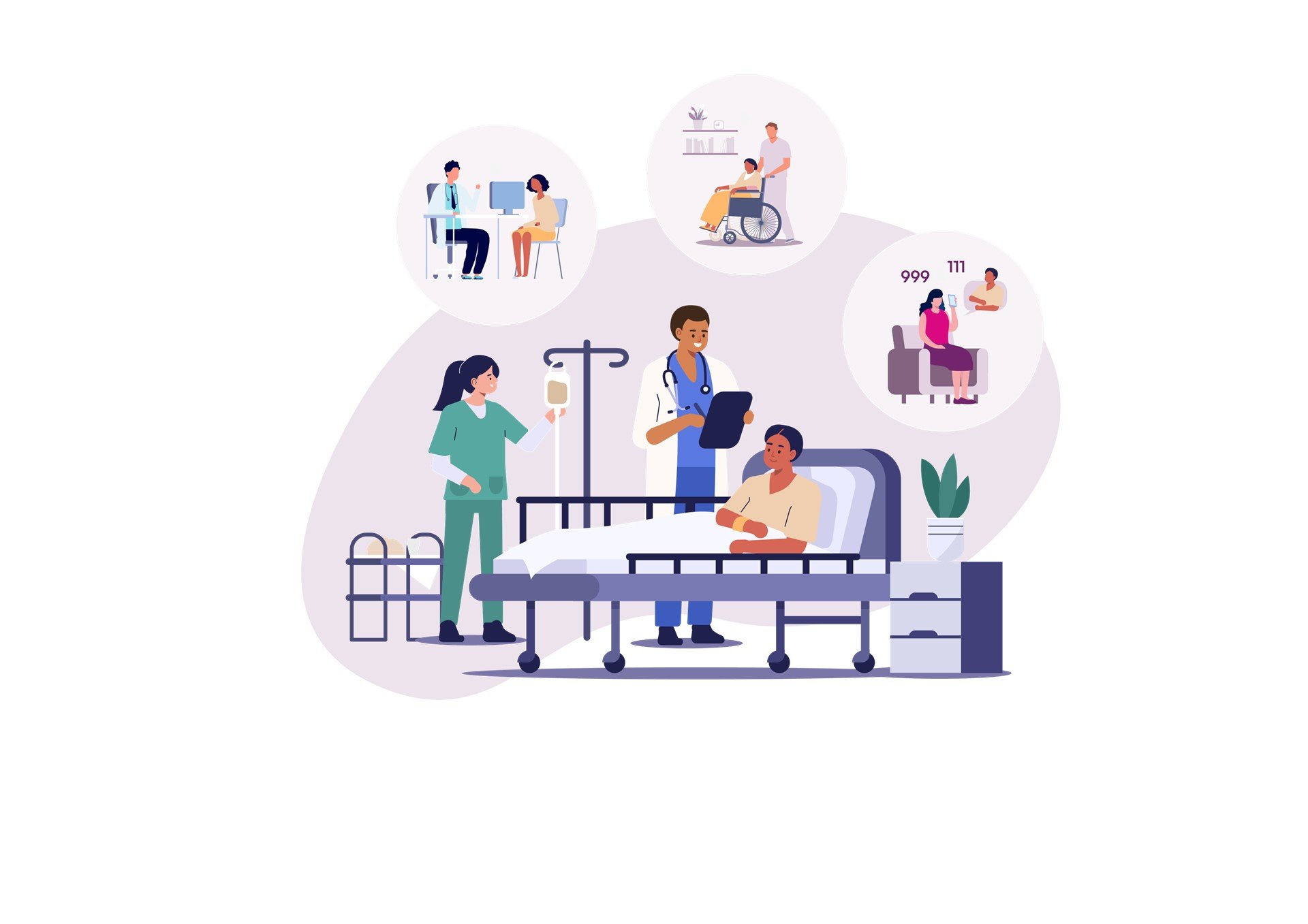Discover the benefits for patients, providers & commissioners.
Release 20 acute beds per 100 in 24 months
The UK national waiting list is nearing ~7 million patients, forecast to grow to over 11 million in 2023. Increasing hospital capacity and patient flow is paramount to patient safety. Our virtual ward model has evidenced the ability to reduce acute Length of Stay by an average of 37% for COPD and Heart Failure patients, enabling increased patient flow. When implemented as a phased change programme, with gradual increase of patient onboarding to the virtual ward, our model can release 20 acute beds per 100 in 24 months and >35 beds per 100 within 48 months.
Reduce 90 day re-admittance by up to 67%
Whilst our model reduces the time that an acute patient spends in hospital, it lengthens the overall duration that they are monitored and treated by a specialist multi-disciplinary team, under the governance of the acute care provider. Furthermore, this period of monitoring and treatment covers the transition of patients to their homes, focussing on stabilisation of their condition in their natural environment. This subtle yet fundamental improvement to the pathway is creating a 67% relative reduction in 90 day non-elective readmission rates. This is a clear indicator of improved clinical outcomes; it also has the additional benefit of further reducing demand.
Reduce cost of acute admissions by up to 30%
The net benefit of reducing length of stay in hospital and reducing readmissions, taking into account the new costs for monitoring and treating patients at home, is a substantial saving of up to 30% per patient. This varies based on condition specific average length of stay and readmission rates, as well as whether patients require a new short-term home care package to enable their time in the virtual hospital. These cost savings can be invested back into the health system to fund additional clinical staff to increase patient flow, service growing demand, as well as enable better rates of pay for staff.
The softer and less tangible benefits are not to be overlooked.
-
Less disruption of mental health care & support.
1 in 4 hospital beds are occupied by patients living with dementia. Hospital stays for such patients can be particularly stressful and disorientating owing to the change in environment, absence of loved ones and familiar carers. Getting such patients home sooner, where their broader needs can be better supported by a familiar team, is essential to preventing serious deterioration of mental health, as well as general health and wellbeing.
-
Reduce muscle wastage & retain independence.
Patients >80 years of age can loose 10% of their muscle mass during a 10 day period of hospital admission, equivalent to 10 years of ageing. Being at home enables better rest, enables participation in appropriate daily living activities around the home and garden, which reduces muscle wastage. This significantly improves the likelihood of patients returning to heath & independence post hospital discharge.
-
Reduce transmission of infection.
With the Covid pandemic still in recent memory and the disease still prevalent and a significant cause of hospitalisation, it is vital to minimise risk of transmission amongst patients and hospital staff. Put simply, it is safer for patients to be at-home. Furthermore, transmission of other viral and bacterial infections such as MRSA, can also be better prevented by removing the patient from hospital sooner.
Get in touch!
Contact us to arrange a Discovery Session or simply to find out more.



